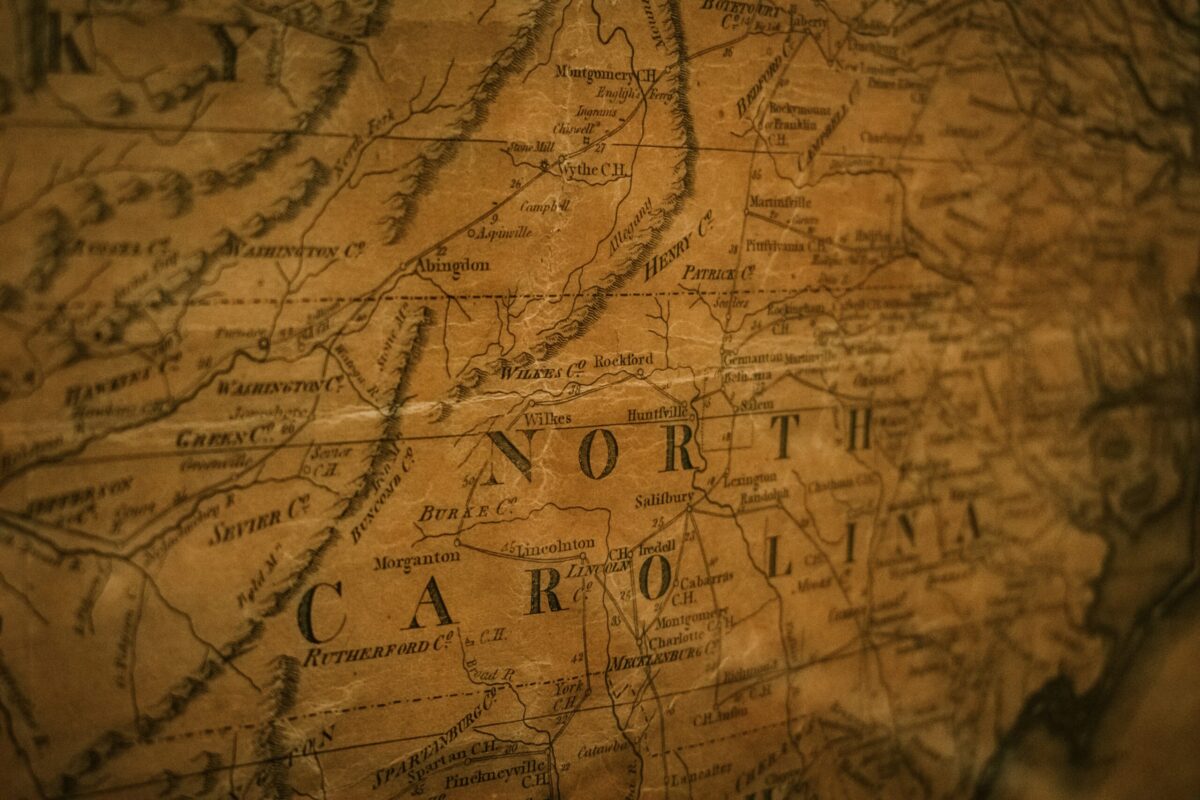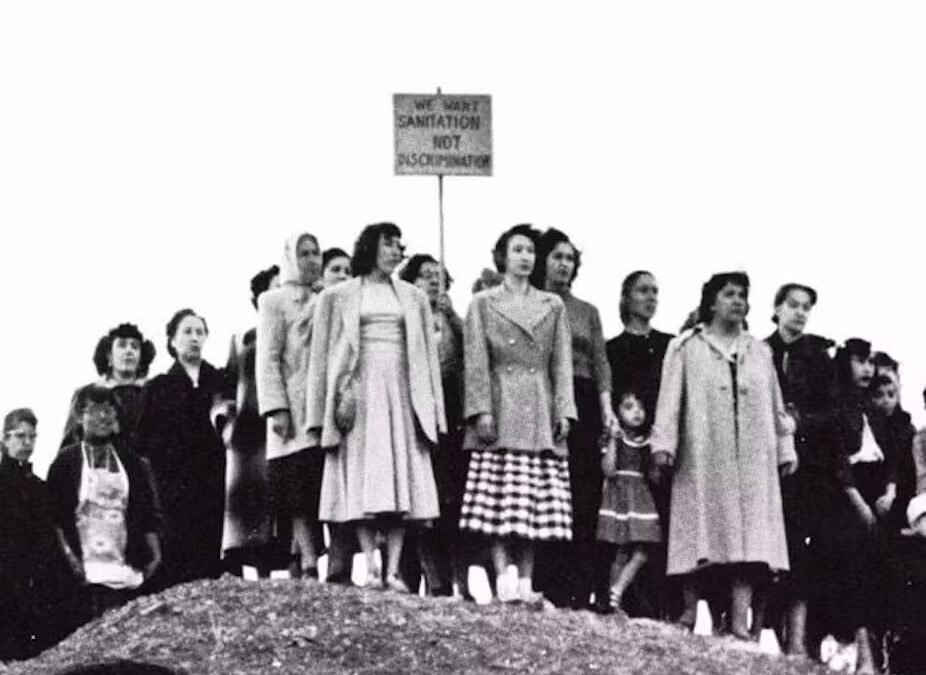
These four indigenous tribes inhabited North Carolina before it became North Carolina. (Alex Boyd/Unsplash)
Several indigenous tribes have always inhabited present-day NC. Let’s take a look at four of them.
Native American tribes have inhabited present-day North Carolina for centuries. According to NCpedia, when English colonists attempted to settle on Roanoke Island approximately 400 years ago, there were over 30 tribes living in the area. Historically, tribes such as the Tuscarora, Saponi, Cheraw, Pee Dee, and Secotan resided here, and the tribes spoke from three distinct language groups, including Algonquian, Siouan, and Iroquoian.
Eight state-recognized tribes currently call North Carolina home, including the Lumbee, Haliwa-Saponi, Cheraw, Sappony, Eastern Band of Cherokee Indians, Waccamaw-Siouan, Meherrin, and Occaneechi Band of Saponi Nation. Today, we’re going to discuss a few of the historic tribes, but you can click here and here to learn more about current tribal communities.
1. Cherokee
The only federally recognized Native American tribe in the state is the Eastern Band of Cherokee Indians, which currently has around 15,000 members. It’s estimated that anywhere between 25% and 50% of the historic Cherokee tribe died on the Trail of Tears in the 1830s, when they were forced to relocate to Oklahoma.
About 300 or 400 Cherokees remained in North Carolina, opting to hide in the mountains for their survival. They later joined the Oconaluftee Cherokee Indians, and together, their descendants comprise the current Eastern Band of the Cherokee, who primarily reside in the Qualla Boundary.
Prior to their forcible relocation in the 1830s, North Carolina’s Cherokees called the Mountain Region home. During the 1760s, the British had promised Native American tribes that white settlers “would not be allowed west of the Appalachian Mountains,” but the settlers came anyway. This was why, during the American Revolution, the Cherokee tribe decided to side with the British, as they thought this would protect them from having additional land stolen. After the Creek and Cherokees were defeated by colonial troops, they signed a treaty in 1777 saying that they would give up “all lands east of the Blue Ridge Mountains.”
However, problems persisted well into the 1790s, and another treaty—this one signed in 1792—was created to guarantee the protection of Cherokee lands and to prevent additional white settlements. When it became abundantly obvious that the white settlers were going to keep stealing Cherokee land, the federal government decided to relocate the tribe “to the newly established Indian Territory in present-day Oklahoma.” This decision led over 20,000 Cherokees to be forcibly moved, with many dying along the Trail of Tears on the journey.
2. Saponi
NC’s current Haliwa-Saponi tribe of the North East Piedmont region can partially trace their origins to the Saponi Indians, who originally settled outside of present-day Charlottesville, Virginia. The Saponis spoke Siouan, and John Smith (yes, of “Pocahontas” Disney movie fame, though the real man was much, much different than his cartoon counterpart) once came across them in 1607.
Over time, the Saponis, who were corn farmers and hunters, gradually moved south. They signed a treaty along with other smaller tribes, like the Tutelo and Occaneechi, in 1714 that established a six-square-mile reservation near the Meherrin River. Then, in 1729, they moved toward the Catawba River, where they found sanctuary with the Catawba Nation. However, the group began to separate sometime in the 1730s. Some members of the Saponi People joined the Catawba, whereas others joined the Tuscaroras (both of which we’ll discuss in a minute).
Remaining members of the Saponis were either absorbed into English settlements or went on to become part of the Haliwa-Saponi Tribe. Currently, the tribe is located in Hollister in Halifax County and has around 4,060 members.
3. Tuscarora
The Tuscarora, who were Iroquoian-speaking, remained in the Neuse River and Pamlico villages after several Algonquian-speaking tribes had decided to move away from the area to avoid an ever-increasing number of white settlers. These settlers went on to create several ongoing problems for the Tuscarora, namely that they wouldn’t allow the tribe to hunt close to their farms, which greatly reduced viable hunting lands in the area. Some members of the Tuscarora were also captured and sold into slavery.
Eventually, the Tuscarora and white settlements went to war in 1711, though the tribe was largely defeated by 1712 and signed a peace treaty that required them to move out of the region. In 1713, troops attacked and killed members of the Tuscarora and captured around 200 women and children from the tribe, who were then sold into slavery. The Tuscarora retaliated, but were again defeated in 1713. Around 1,400 members of the Tuscarora People were killed during this time, and another 1,000 were sold into slavery.
After these atrocities, many remaining members left North Carolina completely and went on to settle in Canada and New York. The current Tuscarora Nation of North Carolina is based in Maxton. A more comprehensive, in-depth history of the Tuscarora from 1142 onward can be found here.
4. Catawba
The Catawba Indians, who are commonly referred to as The Catawba Nation, “have lived on their ancestral lands along the banks of the Catawba River dating back at least 6,000 years,” per the tribe’s official website. Prior to the arrival of white colonists, the Catawba population was estimated to be between 15,000 and 25,000, and they lived throughout North Carolina, South Carolina, and select areas of Virginia.
The Catawba Nation of North Carolina settled in the Piedmont Region and spoke Siouan. They were known for being friendly and kind to the white settlers, but the diseases carried by these settlers killed many members of the Catawba. There was a smallpox epidemic in 1738 that decimated half of their population. Then, a war with nearby tribes led to even further deaths due to the fighting itself, along with a drought that led to the loss of crops and further illnesses. The Catawba population decreased from 5,000 in the 1600s to less than 300 by 1784.
The Catawba were involved in several lengthy, bloody wars, including the French and Indian War, the American Revolution, and the Civil War. You can read more about those battles here. Following centuries of war and devastation, the Catawba were eventually federally recognized in 1941. The Nation decided to terminate this status in 1959 in order to receive individual landholdings beginning in 1962. At that time, the tribe had only 600 members.
A decade later, they reorganized their tribal council and became recognized by South Carolina. They maintained an ongoing court case until 1993 to regain their federally recognized status, and were eventually granted it again that year. In the 2000s, around 2,200 members of the Catawba Nation lived on reservation land in Rock Hill, South Carolina. In 2022, 3,300 members were enrolled in the Catawba.
Additional resources
Native American history in North Carolina, like in all of the United States, dates back thousands of years. Archaeologists can trace the state’s first settlers back 12,000 years, proving that there were prehistoric tribes in the area. Since we all currently live on stolen land, the very least we can do is learn more about the history of this land, of the first people to occupy it, and of the brutal and bloody ways that land was stripped from them over time.
Click here to read the North Carolina Office of State Archaeology’s piece, “North Carolina’s First Colonists: 12,000 Years Before Roanoke.” Additional readings, such as the Charlotte Mecklenburg Library’s “A History of Native Americans in North Carolina,” provide insight into the prehistoric tribes of the region, as does this American Indian Discovery Tour guide from the North Carolina Museum of History.
This article first appeared on Good Info News Wire and is republished here under a Creative Commons license.
Related: The mysterious exhumation of Durham’s founding father

How NC’s Howe family, descended from an enslaved man, helped give Wilmington its distinctive look
North Carolina's Howe family traces their lineage back to an enslaved man who was forced to work construction projects. His descendants have helped...

5 creepy things you never knew about North Carolina
These lesser-known facts and stories about North Carolina will make your hair stand on end. Learning more about the state you live in is never a...

The real ballad of Frankie Silver, one of the first women executed in North Carolina
Frankie Silver is believed to be the first white woman executed in North Carolina. Here’s the real story of what happened to her back in the 1830s....

The real ballad of Frankie Silver, one of the first women executed in North Carolina
Frankie Silver is believed to be the first white woman executed in North Carolina. Here’s the real story of what happened to her back in the 1830s....

5 unsung films that dramatize America’s rich labor history
By Peter Dreier, Occidental College The U.S. is in the midst of a new upsurge of union organizing. Is a Hollywood drama about angry Starbucks...







